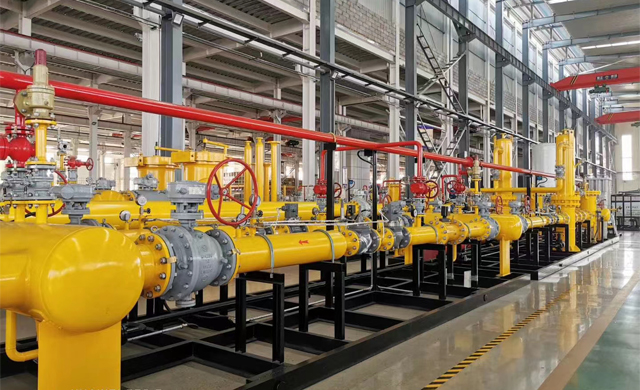
8 月 . 12, 2024 21:28
Back to list
Understanding Pressure Regulators and Their Importance in Fluid Control Systems for Efficient Performance
Understanding Pressure Regulators Essentials and Functionality
Pressure regulators are critical devices widely used in various industrial, commercial, and residential applications to maintain stable pressure levels in systems where fluctuations can cause damage or inefficiency. The primary function of a pressure regulator is to control the pressure of a gas or liquid, ensuring that it remains within predetermined limits, irrespective of upstream fluctuations or downstream demand variations. This article delves into the significance, types, and operational principles of pressure regulators, emphasizing their versatility across different domains.
The Importance of Pressure Regulation
In many systems, whether it be in HVAC systems, gas pipelines, or water supply networks, maintaining a consistent pressure is essential. An inappropriate pressure level can lead to equipment failure, reduced efficiency, and safety hazards. For instance, in natural gas systems, high-pressure levels can result in leaks or even explosions, while too low pressure may impair the functioning of appliances. By regulating the pressure, these devices help ensure the safety, efficiency, and longevity of systems, thereby preventing costly repairs and ensuring compliance with safety regulations.
Types of Pressure Regulators
There are several types of pressure regulators, each serving specific applications and requirements.
.
2. Two-stage Regulators As the name suggests, these regulators reduce pressure in two steps. They are ideal for applications where the inlet pressure fluctuates significantly and offer better performance stability than single-stage regulators.
منظم الضغط

3. Back-pressure Regulators These are used primarily on the discharge side of a system to maintain a certain pressure level. They are particularly useful in preventing overpressure in a system, which can cause serious damage to downstream components.
4. Differential Pressure Regulators These regulators maintain a constant pressure difference between two points in a system. They are commonly found in applications requiring precise control over flow rates under varying pressures.
Operational Principles
The basic operational principle behind a pressure regulator involves the balance between the inlet pressure and an adjustable spring mechanism. Upon monitoring the outlet pressure, if the pressure exceeds the desired level, the regulator automatically adjusts the opening of the valve to decrease flow, thus reducing pressure. Conversely, if the pressure is too low, the regulator allows more gas or liquid to flow through, increasing the pressure back to the set point.
This control mechanism relies on a diaphragm or a similar sensing element that moves in response to pressure changes, providing the necessary feedback to the valve assembly. The adjustment could be manual or automatic, depending on the sophistication of the regulator.
Conclusion
In summary, pressure regulators are indispensable components in many systems requiring stable and safe pressure regulation. With various types tailored for diverse applications and a straightforward operational principle, these devices enhance safety, efficiency, and reliability in fluid and gas systems. Understanding their functionality and importance can aid businesses and homeowners in selecting appropriate solutions to ensure optimal performance in their specific applications. As technology advances, the development of smarter and more efficient pressure regulation systems will continue to play a vital role in improving resource management and operational safety across various sectors.
Latest news
-
Unlocking The Quality Gas Pressure ReducersNewsNov.01,2024
-
The Role of Gas Pressure Reducing StationsNewsNov.01,2024
-
The Importance and Functionality of Safety Relief ValvesNewsNov.01,2024
-
The Essential Role of Safety Valves in Natural Gas ApplicationsNewsNov.01,2024
-
The Essential Role of Gas Pressure RegulatorsNewsNov.01,2024
-
Enhance Your Premium Gas FiltersNewsNov.01,2024

